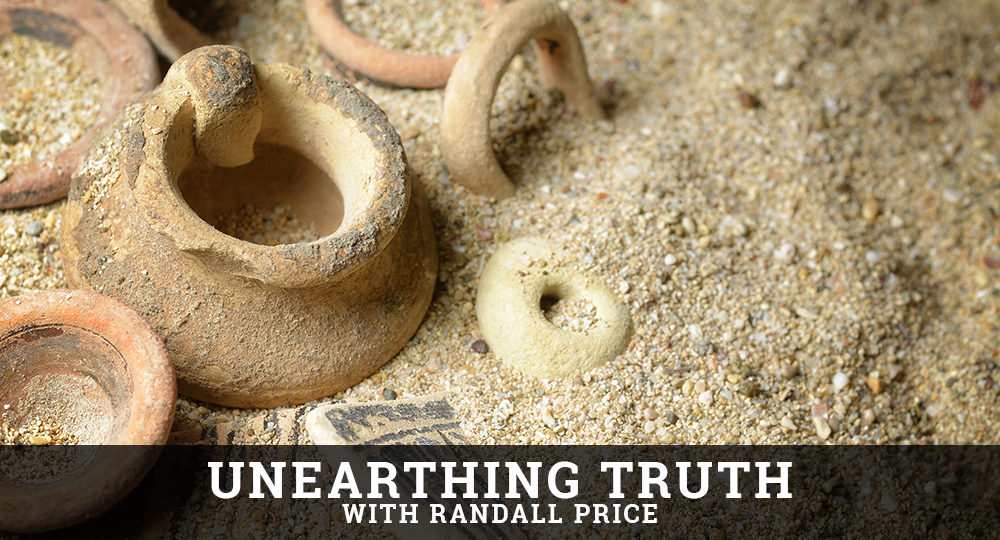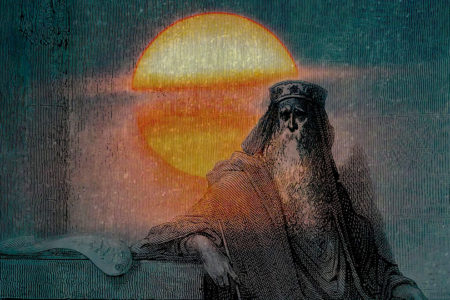The Sanctuary’s Sweet Cover-up
Many people today use diffusers to disperse essential oils into the air to promote physical health and freshen a room. The diffuser’s function somewhat resembles that of the altar of incense, which was an essential vessel in the Tabernacle and later the Temple. It promoted the spiritual health of Israel and filled the Holy Place with a holy fragrance.
Made of acacia wood overlaid with gold, the altar of incense stood 3 to 3.5 feet in front of the veil that separated the Holy Place from the holy of holies (Ex. 30:1–10). At the top was a gold crown with four corners, each shaped like a horn (like the bronze altar in the courtyard). Near the bottom were golden rings used to insert carrying poles.
Scripture explicitly says only the priest could burn fragrant incense on this altar, a task he was to perform both morning and evening (vv. 7–8). The incense in Hebrew was called qětōret (25:6; 35:8; 37:29) and lěbōnâ (frankincense, 30:34–38), although this ingredient was mixed with several other rare spices to make the special, fragrant formula reserved for use in the Tabernacle only.1
Semantically, the Hebrew words incense and perfume are identical, indicating the altar of incense was to provide a “sweet aroma” before the Lord, whose divine presence was manifested at the Ark of the Covenant on the other side of the separation veil. Because the sacrificial system produced the stench of death all around the Tabernacle, it was necessary that God’s wrath against sin, typified in the sacrifices, be expiated (turned away). The incense inside masked the awful smell outside and symbolically covered the offense of human sin in God’s sight.
One of the mediatorial functions of a priest was to render sinful people acceptable to a holy God through an offering, which may be why individuals were forbidden to use the holy qětōret; it represented their admittance into God’s presence through the high priest.
Moreover, the incense was burned on pieces of hot coal that the priest scooped up in a bronze or golden fire pan from the altar of burnt offering in the courtyard.2 This practice united the altar of incense with the place where atonement had been made.
On the Day of Atonement (Lev. 16), the high priest made atonement for the altar of incense by applying blood from the sin-offering to the altar’s horns (Ex. 30:10). He then took a censer full of burning coals from the altar while his hands were full of sweet incense and brought it inside the separation veil (Lev. 16:12). He burned the incense to create a veil of sweet-smelling smoke that further separated him from the divine presence. Only after the smoke had filled the holy of holies did the high priest apply the sacrificial blood to the mercy seat on the Ark.
Archaeologists have uncovered many four-horned stone altars in Israel. The larger ones were used for burnt offerings. At Tel Arad, where a 10th-century BC Israelite sanctuary stood, smaller incense altars comparable to those in the Tabernacle and Temple3 were found on the steps leading to the holy of holies.
At other sites, such as Tel Dan where Jeroboam II established a rival sanctuary with golden calves (1 Ki. 12:32), both stone altars and metal fire pans have been discovered, attesting to the Bible’s accuracy regarding the ritual service and its vessels. The altar of incense also reminds us of the necessity of this sweet cover-up (atonement) performed at last by our Great High Priest, the Lord Jesus Christ (Heb. 9:11–15).
ENDNOTES
-
-
- Kjeld Nielsen, “The Use of Incense in Divine Worship,” Anchor Bible Dictionary 3:407, s.v. “incense.”
- The firepans were usually copper, but the Mishnah states that those used to carry coals from the brazen altar to the altar of incense were gold (m. Tamid 5:5, 6:2). See Dr. Raz Kletter, “Fire Pans in the Bible and Archaeology,” TheTorah.com (thetorah.com/article/fire-pans-in-the-bible-and-archaeology).
- M. D. Fowler, “Excavated Incense Burners,” Biblical Archaeology 47 (1984): 183–186.
-








